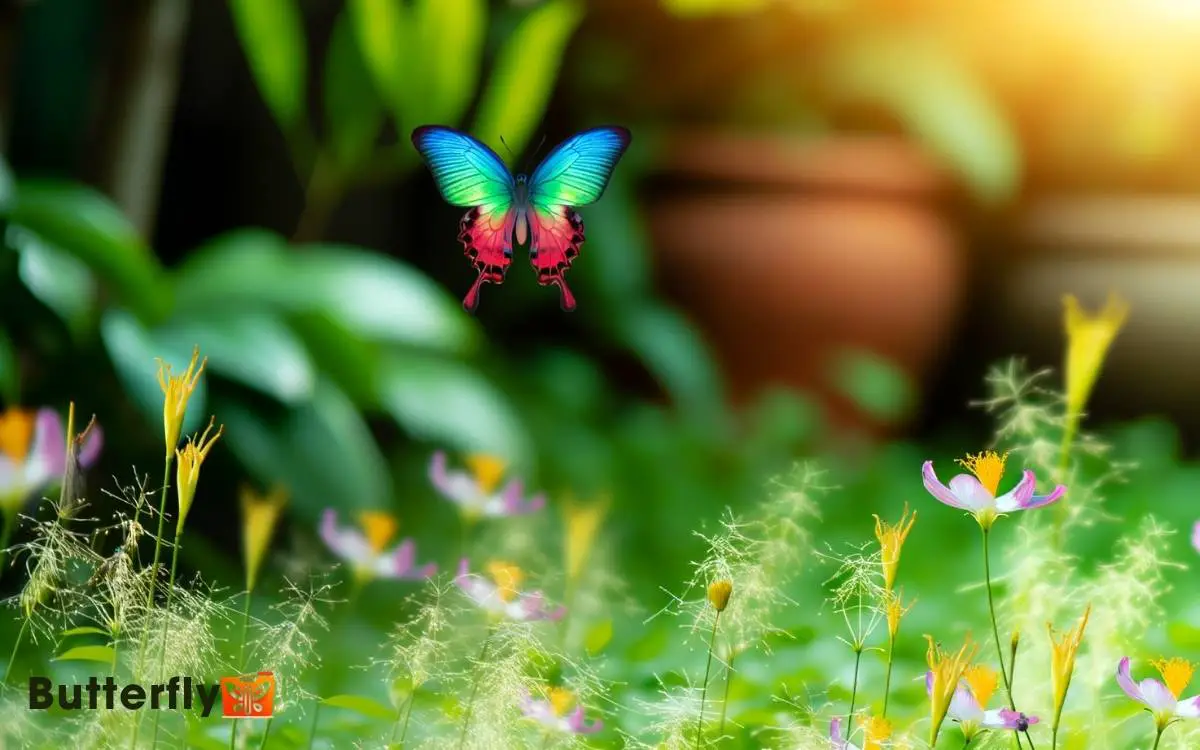How Do You Say Butterfly In Spanish? Mariposa!
In Spanish, you say ‘butterfly’ as ‘mariposa.’ Make sure you emphasize the second syllable: ma-ri-PO-sa. It’s a beautiful word that symbolizes transformation, hope, and life cycles, reflecting its deep cultural roots in many Spanish-speaking countries.
Monarch butterflies, for example, are iconic during Mexico’s Day of the Dead. When using ‘mariposa,’ remember it’s a feminine noun, so pair it with feminine articles and adjectives.
Keep practicing your pronunciation to show respect for the language and improve your communication skills. By learning about ‘mariposa,’ you’re opening doors to richer cultural understanding and expression.

Key Takeaways
Meaning of Mariposa
The word ‘mariposa‘ directly translates to ‘butterfly‘ in English and is used in Spanish-speaking countries to refer to the delicate, colorful insect.
When you use ‘mariposa,’ you’re invoking images of transformation and beauty, much like the butterfly’s metamorphosis from caterpillar to its final, graceful form.
Knowing this term is essential if you’re aiming to enhance your Spanish vocabulary with words that are both meaningful and vivid. Think about it: mastering such terms not only helps you communicate more effectively but also opens doors to appreciating cultural nuances.
In many Latin American cultures, mariposas symbolize change, hope, and life cycles, emphasizing their importance beyond mere translation.
Pronunciation Guide
When you say ‘mariposa‘ in Spanish, you’ll want to emphasize the second syllable: ma-ri-PO-sa. This focus guarantees that you pronounce the word correctly, making it sound natural to native speakers.
The ‘a’ in ‘ma’ and ‘ri’ is pronounced like the ‘a’ in ‘father.’ The ‘o’ in ‘PO’ is a short, crisp sound, similar to the ‘o’ in ‘pot.’ The ‘sa’ at the end should be light and quick, like the ‘s’ in ‘snake‘ and the ‘a’ in ‘sofa.’
Practice this a few times to get comfortable. Accurate pronunciation not only helps you communicate more effectively but also shows respect for the language. It can make your conversations richer and more engaging, especially when discussing nature or travel.
Cultural Significance
Understanding how to pronounce ‘mariposa‘ is just the beginning; this beautiful word also holds deep cultural significance in various Spanish-speaking countries.
- In Mexico, the monarch butterfly is a powerful symbol associated with the Day of the Dead, representing the spirits of the deceased returning to the world of the living.
- In Spain, ‘mariposa’ often symbolizes transformation and change, reflecting the butterfly’s metamorphosis from caterpillar to its final form.
- In some Latin American cultures, butterflies are seen as omens or messengers, conveying important spiritual messages.
Recognizing these cultural nuances can enrich your understanding of the word and its broader implications. As you explore further, you’ll find that ‘mariposa’ embodies more than just a simple translation it’s a gateway to cultural depth.
Usage in Sentences
In order to effectively use ‘mariposa’ in sentences, one must understand its grammatical gender and context within Spanish language structure. ‘Mariposa’ is a feminine noun, so it pairs with feminine articles and adjectives.
For instance, “The butterfly is beautiful” translates to “La mariposa es hermosa.” Knowing this can help you construct accurate and meaningful sentences.
Here are some example sentences:
| English Sentence | Spanish Translation | Notes |
|---|---|---|
| The butterfly is colorful. | La mariposa es colorida. | Adjective matches feminine noun. |
| I saw a butterfly. | Vi una mariposa. | ‘Una’ is the feminine article. |
| Butterflies are fascinating. | Las mariposas son fascinantes. | Plural form with feminine article. |
Using ‘mariposa‘ correctly will enhance your Spanish communication skills.
Fun Facts
Beyond using ‘mariposa’ in sentences, you might find it fascinating to learn some fun facts about butterflies in Spanish-speaking cultures.
In Mexico, butterflies, especially the Monarchs, are symbols of transformation and endurance. Every year, millions of Monarch butterflies migrate to Mexico, arriving around the Day of the Dead.
This event holds cultural significance, as it’s believed the butterflies are the souls of deceased loved ones returning for a visit.
Additionally, in many Spanish-speaking countries, butterflies are associated with beauty and grace, often appearing in art, literature, and festivals.
Did you know that the word ‘mariposa’ comes from the phrase ‘María pósate‘ (Mary alight)? This connection adds a layer of history and charm to the name.
Conclusion
So, now you know how to say butterfly in Spanish—it’s ‘mariposa. ‘ You’ve learned about its meaning, how to pronounce it, and its cultural significance. In addition to Spanish, you might be curious about how to say butterfly in Japanese—it’s ‘蝶 (chō)’ in Kanji. The word holds deep symbolism in Japanese culture, often representing transformation and the fleeting nature of life. Learning these translations can help you appreciate the beauty of language and cross-cultural connections.
But did you know some believe saying ‘mariposa’ can bring good luck? While there’s no scientific proof, many people hold onto this charming idea.
Next time you see a butterfly, try it out! Remember, language connects us to culture and sometimes to delightful superstitions.
Happy learning!






